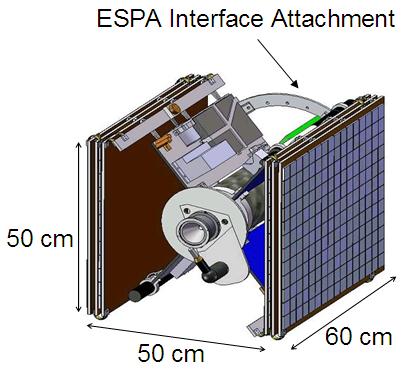Orbital Surveillance Maneuverability Vehicle (OSMV) Version 1
 |
Our Mission
The MIT Satellite Teamís first satellite is the Orbital Surveillance Maneuverability Vehicle (OSMV). The OSMV will demonstrate on-orbit performance of the Diverging Cusped-Field Thruster, which provides enough velocity increment to reach the Moon, and the first student-built, deployable, actively articulated solar arrays. This will be a revolutionary accomplishment for a student-built satellite.
However, one system of the OSMV that is very difficult to test in a gravitational field (such as on Earth) is the solar array deployment, which is a primary technology MIT plans to demonstrate. The OSMVís solar array deployment experiment involves releasing the braided-fiber lines that hold the panels in place during launch. Once the lines are melted, tape springs force the solar panels to unfold on either side of the OSMV. This mechanism is not designed for a 1g environment and it is difficult to test on Earth because the supports used to simulate microgravity on Earth significantly detract from the experiment. Microgravity testing of the satelliteís solar array deployment mechanism will increase its Technology Readiness Level, which is an important criteria when being selected for a launch into space.
Fortunately, the team applied and was selected from a competitive pool to test the satelliteís solar array deployment during a microgravity ZERO-G flight in June as part of the Apollo 40th anniversary celebration. OSMV 1 is a version of the satellite intended to gain flight heritage for some of our new or untested technologies, including our Diverging Cusped-Field Thruster and our student-built solar arrays.
Our Driving Requirements
- Under 50 kg total mass, including propellant
- Stowed dimensions of 50cm x 50 cm x 60 cm
- ESPA interface attachment (ESPA stands for EELV Secondary Payload Attachment, and EELV stands for Evolved Expendable Launch Vehicle)